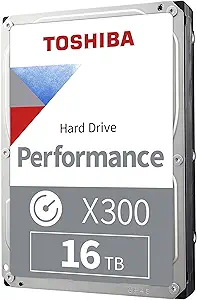Characteristics of PET non-woven fabric:First, the polyester (PET)
spunbond filament non-woven fabric is a water-repellent non-woven
fabric, and the water-repellent properties of the non-woven fabric
are different depending on the gram size. The larger and thicker
the weight, the better the water repellency. If there are water
droplets on the surface of the non-woven fabric, the water droplets
will slide directly off the surface. Name:spunlace non woven
fabricMaterial: Polyester+ViscoseDensity:20gsm-100gsm/customizableColor:whiteSize:As
your requirementCustomized:Any shape, Any special size are
acceptedFeature:Eco-friendly/WashableApplication:Home
textile/garment/light industryApplication:1. Non-woven fabric for
clothing: 1) clothing, glove interlining 2) shopping bag
3)flocking2. Leather, non-woven fabric for shoemaking 1) inner
lining 2), base cloth 3), intermediate padding material3. Home
decoration, furniture non-woven fabric 1) Carpet and base cloth 2)
Wall sticking material 3) Furniture decoration 4) Spring wrapping
cloth, isolation cloth 5) Bedding and curtains, curtains 6) Filter
cloth transfer printing 7) Napkins, table cloths, table cloths 8)
Electric heating Blanket cloth 9) Modular wardrobe 10) Sun umbrella
cloth4. Non-woven fabrics for medical and health use 1), tea bags,
coffee bags 5. Construction, civil engineering, water utilization
non-woven fabric 1) Drainage plate filter cloth 2) Silt-proof
drainage pipe3) Building waterproof material 4) Insulating cloth 5)
Pipe wrapping cloth 6) Non-woven fabric for filter material It is
used to filter air and oil.7. Industrial non-woven fabric 1),
coated fabric 2) cable covering fabric 3) battery separator 4)
plastic reinforcement fabric 5) absorbent material 6) flame
retardant fabric8. Non-woven fabrics for automobile industry9.
Non-woven fabric for packaging10. Non-woven fabrics for agriculture
and horticulture 1) Thermal insulation cover 2) Seedling nursery
clothSecond, high temperature resistance. Because the melting point
of polyester is around 260°C, it can maintain the stability of the
non-woven fabric's dimensions in an environment that requires
temperature resistance. It has been widely used in heat transfer
printing, transmission oil filtration, and some composite materials
that require high temperature resistance. /* January 22,
2024 19:08:37 */!function(){function s(e,r){var
a,o={};try{e&&e.split(",").forEach(function(e,t){e&&(a=e.match(/(.*?):(.*)$/))&&1
Related products about Elastic Plaster Pet Rolls Water Absorbent PP Spunbond Nonwoven Fabric
-
 Waste Tyre Plastic Recycling Machinery Machine Tire Crusher Production Line Rubber Crumb Grinding Machine Equipment Tire Shredder
Waste Tyre Plastic Recycling Machinery Machine Tire Crusher Production Line Rubber Crumb Grinding Machine Equipment Tire Shredder
-
 Stretch Plastic Blowing Pet Bottle Making Blow Molding Machine Bottles Stretch Automatic Pet Bottle Blowing Machine
Stretch Plastic Blowing Pet Bottle Making Blow Molding Machine Bottles Stretch Automatic Pet Bottle Blowing Machine
-
 Waste Plastic Pet Bottle, Water Bottle Flake, PP/HDPE/LDPE PE Film Jumbo Woven Bags Plastic Crusher Machine, Plastic Crushing Washing Recycling Machine
Waste Plastic Pet Bottle, Water Bottle Flake, PP/HDPE/LDPE PE Film Jumbo Woven Bags Plastic Crusher Machine, Plastic Crushing Washing Recycling Machine
-
 Type 2 Wall-Mounted Electric Car Charging Station 7kw /11 Kwelectric Vehicle Charging Station Home Wallbox AC EV Charger Single Phase or 3three Phase
Type 2 Wall-Mounted Electric Car Charging Station 7kw /11 Kwelectric Vehicle Charging Station Home Wallbox AC EV Charger Single Phase or 3three Phase
-
 G-View G12W Wholesale Auto Car LED Headlight Bulb High Power H13 H11 9005 H7 H4 Car LED Headlights LED Car Lights
G-View G12W Wholesale Auto Car LED Headlight Bulb High Power H13 H11 9005 H7 H4 Car LED Headlights LED Car Lights
-
 New Design Porcelain Round Plates Dinner Set for Wedding and Banquet
New Design Porcelain Round Plates Dinner Set for Wedding and Banquet
-
 China 2023 New Design Super Soft 100% Polyester Microfiber Knitted Oversized Decoration Hoodie Blanket
China 2023 New Design Super Soft 100% Polyester Microfiber Knitted Oversized Decoration Hoodie Blanket
-
 Handmade Art Creative Materials Thickened White Paper Cup DIY Disposable Handmade Colored Paper Cup
Handmade Art Creative Materials Thickened White Paper Cup DIY Disposable Handmade Colored Paper Cup






